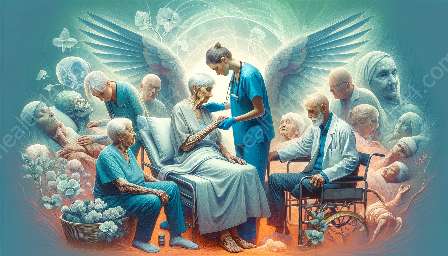As the population ages, the prevalence of musculoskeletal disorders increases, leading to greater demand for effective geriatric rehabilitation. In this topic cluster, we will explore the impact of musculoskeletal disorders on the aging population and examine the principles, practices, and approaches of geriatric rehabilitation.
Musculoskeletal Disorders in the Geriatric Population
Musculoskeletal disorders encompass a wide range of conditions affecting the muscles, bones, joints, and connective tissues. In the geriatric population, these disorders are particularly prevalent due to age-related changes, degenerative processes, and the cumulative effects of wear and tear on the musculoskeletal system.
Common musculoskeletal disorders in older adults include osteoarthritis, osteoporosis, rheumatoid arthritis, gout, fractures, muscle weakness, and soft tissue injuries. These conditions can significantly impact mobility, independence, and overall quality of life in aging individuals.
Impact of Musculoskeletal Disorders on Functional Ability
Musculoskeletal disorders can profoundly affect the functional ability of older adults, leading to difficulties in performing activities of daily living, such as walking, climbing stairs, bathing, and dressing. Additionally, pain, stiffness, and limited range of motion associated with these disorders can contribute to decreased physical activity and social participation, increasing the risk of isolation and depression in the geriatric population.
Furthermore, musculoskeletal disorders are often linked to comorbidities such as cardiovascular diseases, diabetes, and obesity, which can further exacerbate the impact on functional ability and overall health in older adults.
Principles of Geriatric Rehabilitation
Geriatric rehabilitation aims to restore and enhance the functional abilities of older adults with musculoskeletal disorders, focusing on promoting independence, mobility, and quality of life. Rehabilitation programs are tailored to address the specific needs and goals of each individual, employing a multidisciplinary approach that may involve physiatrists, physical therapists, occupational therapists, and other healthcare professionals.
Key principles of geriatric rehabilitation include comprehensive assessment, personalized goal setting, evidence-based interventions, and ongoing monitoring and reassessment. Rehabilitation programs often encompass a combination of exercises, manual therapy, gait training, adaptive equipment, and education on self-management strategies.
Approaches to Geriatric Rehabilitation
Various approaches are utilized in geriatric rehabilitation to address musculoskeletal disorders and optimize functional outcomes for older adults. These approaches may include:
- Strength and Balance Training: Programs focused on improving muscle strength, endurance, and balance to reduce the risk of falls and enhance overall stability.
- Pain Management: Interventions aimed at alleviating pain and discomfort associated with musculoskeletal conditions, utilizing modalities such as heat, cold, electrical stimulation, and therapeutic ultrasound.
- Joint Protection Techniques: Education and training on joint protection strategies to minimize stress on arthritic joints and preserve joint function.
- Functional Mobility Training: Rehabilitation activities designed to improve gait, transfers, and functional mobility, enabling older adults to perform daily tasks with greater ease and efficiency.
- Environmental Modifications: Assessing and modifying home environments to enhance safety and accessibility for individuals with musculoskeletal impairments.
Integration of Technology in Geriatric Rehabilitation
Advancements in technology have significantly impacted the field of geriatric rehabilitation, offering innovative solutions to enhance the delivery and effectiveness of rehabilitation services for older adults with musculoskeletal disorders. Technologies such as virtual reality, wearable sensors, tele-rehabilitation platforms, and robotic-assisted devices have been increasingly utilized to provide engaging, personalized, and accessible rehabilitation interventions.
These technological advancements not only facilitate therapeutic exercises and functional training but also enable remote monitoring, data collection, and real-time feedback, empowering older adults to actively participate in their rehabilitation process while receiving support from healthcare providers and caregivers.
Challenges and Opportunities in Geriatric Rehabilitation
While geriatric rehabilitation holds great promise in improving the lives of older adults with musculoskeletal disorders, it also presents challenges that need to be addressed. These challenges include access to specialized geriatric rehabilitation services, coordination of care within complex healthcare systems, caregiver support, and addressing the unique needs of diverse older adult populations.
Moreover, as the aging population continues to expand globally, there is a growing opportunity to innovate and expand geriatric rehabilitation programs, promote preventive strategies, and integrate technology-driven solutions to optimize functional outcomes and well-being for older adults with musculoskeletal disorders.
Conclusion
In conclusion, musculoskeletal disorders have a significant impact on the aging population, affecting functional ability, independence, and overall quality of life in older adults. Geriatric rehabilitation plays a vital role in addressing the unique rehabilitation needs of older individuals with musculoskeletal disorders, aiming to improve mobility, reduce pain, and enhance independence. By understanding the principles, practices, and approaches of geriatric rehabilitation, healthcare professionals can better support the aging population in maintaining functional ability and promoting healthy aging.


